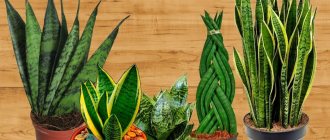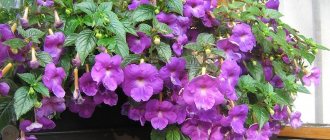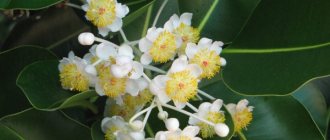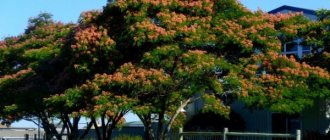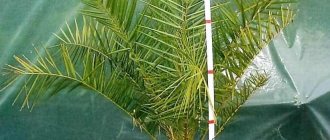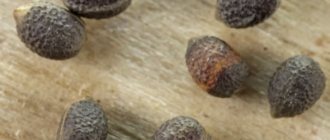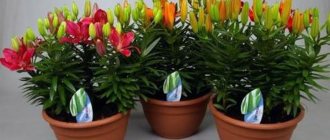- Introduction
- Top dressing from sowing up to 1.5 months
- Feeding from 1.5 to 2.5 months
- Feeding from 2.5 to 5 months
- Feeding after 5 months
- Feeding an adult plant
- Important
- Other fertilizers
Top dressing from sowing up to 1.5 months
In the germination stage
(sowing - 1.5 months) adenium remains from the moment of germination until the end of its maintenance in the greenhouse. At this time, it is not recommended to use any fertilizers in the substrate, because adenium has a natural ability for initial rapid growth. Use liquid fertilizers high in nitrogen (N) to spray the leaves 1-2 times a week. The content of phosphorus (P) and potassium (K) should be 20-30% lower than nitrogen (N). Recommended ratio of elements in fertilizer: 20(N)-15(P)-15(K).
At this stage, liquid fertilizers for cacti and succulents can be used with the appropriate combination of NPK and microelements, as a rule, they contain the optimal concentration of nutrients and the required level of acidity.
Planting in the ground, transplanting
The soil for adenium is selected to be light. For it, loose soil with a high content of nutrients is chosen. It must have high permeability to moisture and oxygen. The soil acidity level is recommended with a pH of 5.5-7.
Flower growers advise using store-bought peat-based mixtures with coconut fibers. These are ideal fertilizers for adenium. For the plant, you can use mixtures for succulents, universal soil with loosening and structuring components.
Making your own mixture for planting is also possible. To do this, take five parts of soil substrate, three parts of leaf soil with humus, two parts of vermiculite, river sand and perlite. Additional feeding for adenium in the form of charcoal will also not hurt.
Commercial production companies growing adeniums recommend using the following formulation. Three parts crushed tree bark, part perlite. This is enough to provide good permeability for air and moisture in the soil. This option is considered universal. Many gardeners use it. Its advantage is that its density does not increase. The disadvantage is the low content of nutritional compounds, which is compensated by constant feeding.
Adenium is transplanted at home in the spring. This must be done before the spring awakening begins.
How to transplant adenium at home? To do this, select a pot according to size. Select a small container, otherwise there will be no flowering. Cramped pots also do not contribute to a positive result; the trunks develop inharmoniously in them.
Feeding from 1.5 to 2.5 months
In the adaptation stage
(1.5 months - 2.5 months) adenium is deprived of its greenhouse contents and gradually adapts to the environment. Spraying the leaves with liquid fertilizer continues 1-2 times a week, but the ratio of elements changes to equal. Recommended ratio of elements in fertilizer: 20(N)-20(P)-20(K).
At this stage, you can use fertilizers for spraying: “Plantafol 20:20:20” - 20(N)-20(P)-20(K), “MASTER 18:18:18+3” - 18(N)-18 (P)-18(K), "FERTICA LUX" - 16(N)-20(P)-27(K), "FERTIKA CRYSTALON UNIVERSAL" - 17(N)-16(P)-21(K).
Table: diseases and pests of flowers
| Disease/pest | How does it manifest? | How to get rid of it? |
| Spider mite | It is almost impossible to notice a spider mite with the naked eye. The pest sucks the juice from the leaves, so they turn pale, become almost transparent, the foliage dries and falls off. A thin web is visible on the underside. | Mechanical restoration. Apply a thick soap solution to the leaves, being careful not to get it on the trunk. After three to four hours, wipe off the soap with a sponge soaked in ethyl alcohol. Spray the adenium with Actellik and place it together with the pot in a bag; after three days the plant can be removed. If necessary, carry out another treatment with the drug after two weeks. |
| Root mealybug | A whitish coating appears along the edge of the container with the plant. The caudex becomes soft, the leaves lose their tone, wrinkle and dry out. | Replant the plant in clean soil. Take it out of the pot, wash the roots, remove any rotten ones. Plant in a new container with fresh substrate and treat with Actellik three times with an interval of ten days. |
| Root rot | Dark spots on the caudex; if you press on them, the caudex in this place is soft. | Replant the plant in clean soil. Take it out of the pot, wash the roots, remove any rotten ones. Disinfect them in a bright pink solution of potassium permanganate for 2-3 hours. Treat the roots with Maxim, Trichodermin or Baikal-EM. |
Feeding from 2.5 to 5 months
In growth stage
(2.5 months - 5 months) adenium remains from the moment of picking until it is ready to bloom. During this period, the plant is able to grow quickly, which requires more nutrients. Therefore, when transplanting seedlings into separate containers, long-acting fertilizers are added to the soil to nourish the plant throughout the next year. Also, spraying the leaves with liquid fertilizer 1-2 times a week continues. An equal ratio of elements in all types of fertilizers is recommended: 20(N)-20(P)-20(K).
At this stage, you can add long-term fertilizers to the substrate, such as “Orgavit” horse, “Fasco” chicken or organic matter in the form of “Hostes” horse manure in pressed sticks 1-3 cm in size (pellets). Plants grown in substrates containing horse manure differ significantly in better development from their counterparts, BUT!!! It must be remembered that pure organic fertilizers in the form of horse manure, mullein, and bird droppings are dangerous for the root system of the plant due to the high Nitrogen (N) content and the creation of an excessive concentration of salts in the soil. It is also necessary to take into account that when using pure organic matter or other strong fertilizers, plants require stable, long daylight (phytolamps can be used).
To avoid problems with the possible consequences of adding pure organic matter, it is recommended to add long-acting fertilizer “Osmocote Bloom” to the substrate, each granule of which contains all the basic nutrients: nitrogen, phosphorus, potassium and a full set of microelements in a form accessible to plants. The composition pays special attention to elements that contribute to beautiful and abundant flowering.
After an in-depth analysis and analysis of all possible options, this drug turned out to be practically the only one allowed and recommended for application to the soil when growing adeniums in the first year of life. This form of Osmocote manages to complete its long-term effect before the onset of the dormant period, and if used correctly and in combination with other indicated means, it can promote flowering before the onset of stagnation.
For early winter sowing, it is recommended to use Osmocote Exact Standard High K 5-6, subject to the correct recommendations.
Fertilizers used for spraying: “Plantafol 20:20:20” - 20(N)-20(P)-20(K), “MASTER 18:18:18+3” - 18(N)-18(P)- 18(K), "FERTICA LUX" - 16(N)-20(P)-27(K), "FERTIKA CRYSTAL UNIVERSAL" - 17(N)-16(P)-21(K) .
How to water adenium seedlings
Watering adeniums is the most difficult topic, since there is no uniform advice on how much water these plants need.
First, let's break this topic into two. Watering seedlings and watering grafts. 1. Seedlings According to a group of people who prefer to grow flowers in the most natural conditions possible, watering seedlings should be exactly the same as adult plants. At the same time, they suggest planting adeniums in sand and stones so that as little water as possible remains in the substrate. The standard advice is to keep the soil slightly moist all the time. The disadvantage of the first is that there is a high chance of simply drying out the seedling, and even if it survives, it will grow much more slowly. The downside of the second is the risk of rotting, especially if the temperature suddenly drops or just gets cold from the window. However, what both the first and second agree on is that even minimal watering should be done wisely. The amount and frequency depends on light, temperature, substrate and pot size. If you keep them outside or in a south-facing window and the temperature is more than 35 degrees, it is quite possible that you will have to water them every day. Especially if you are a supporter of lightweight substrates that do not retain water. In any case, it would be a good idea to either stick your finger or a toothpick into the soil and use the moisture content at the bottom to determine watering. If we are talking about temperatures below 25, then you should use another old piece of advice: wait until the seedlings begin to wrinkle the caudex. And believe me, this is good advice, especially when it comes to maintaining adeniums in winter. Like the orchids that I have been cultivating for many years, these plants (healthy ones, of course) are almost impossible to dry and very easy to water. But, like orchids again, adeniums have periods when they can drink almost everything that flows. We are talking about periods of active growth in hot weather and bright sun. 2. Vaccinations In the case of adult plants that come to you in a dormant state, everything is much more complicated. They should practically not be given water until they wake up and actively begin to grow their buds. But you shouldn’t keep it in completely dry soil all the time. Otherwise, they will have no incentive to grow roots and wake up. When the adenium has fully started to grow, watering them becomes only a little harsher than that of your seedlings. That is, we pour water only after the substrate has completely dried, keeping it on top for another couple of days. In winter, if you do not have the opportunity to keep adeniums under additional lighting, watering should be reduced to at least once every one and a half to two weeks. Some reduce it to one drink of water per month, but then it will be very easy to fill the adenium with the arrival of spring (according to the observations of many more experienced lovers of these flowers). If you water so rarely or even dig it up and leave it without soil, then with the beginning of the warm season you will have to accustom this succulent to water in the same way as a newly arrived graft. It is much easier to rot an adult plant than a seedling, especially if it came from warm regions and was not grown by you personally. The main advice: if you are in doubt about watering, it is better to wait another three days or water a little along the edge of the pot. And only in the warmth - if your grafts grow on a window and it blows from it, you should put the plants in their usual place only after the soil has dried.
Feeding after 5 months
Flowering stage
(from 5 months after sowing) in adenium occurs 5-10 months after sowing, depending on the content. A prerequisite for flowering is prolonged bright lighting during all previous stages, as well as constant maintenance in the temperature range of 22-35°C. Because Since these conditions are rarely met at home, flowering usually occurs only in the second year. In order to help adenium bloom, from this period begins spraying the foliage 1-2 times a week with liquid fertilizers high in phosphorus (P) and potassium (K) and low in nitrogen (N). Recommended ratio of elements in the fertilizer: 8(N)-15(P)-15(K).
Fertilizers used for spraying: “Plantafol (or Plantafid) 10:54:10” - 10(N)-54(P)-10(K), “MASTER 13.40.13” - 13(N)-40(P)- 13(K), "FERTICA LUX" - 16(N)-20(P)-27(K) or "Peters Professional Blossom Booster" (coming soon!) - 10(N)-30(P)-20( K).
Brief description of cultivation
- Bloom . It blooms in April–July and September–October, but in some cases it lasts more than 6 months.
- Illumination . Needs bright sunlight.
- Temperature regime . During intensive growth - from 25 to 30 degrees, during the rest period - from 12 to 15 degrees.
- Watering . Carry out only after the soil mixture has completely dried.
- Air humidity . It should be increased, especially during periods of intensive growth.
- Fertilizer . Feed throughout the growing season once every 4 weeks; for this purpose, mineral fertilizers for indoor flowering plants are used.
- Rest period . In November–March.
- Transfer. Young bushes need to be replanted every year, and older ones only when necessary.
- Soil mixture . Soddy soil mixed with coarse expanded clay or broken bricks.
- Reproduction . By generative (seed) method or vegetative method: cuttings, grafting or layering.
- Harmful insects . Scale insects, mealybugs, spider mites.
- Diseases . The culture is highly resistant to diseases. However, the bush may begin to lose foliage due to drafts, a sharp drop in temperature and a sudden change in living conditions.
- Properties . The sap of the plant is poisonous.
Feeding an adult plant
Adenium shows the fastest growth at the age of up to 1 year, then slows down slightly at the age of 1-3 years, and noticeably slows down in growth after 3 years. Further application of fertilizers depends on the goals pursued. For example, for frequent and abundant flowering, with appropriate maintenance, plants are fed in the same way as at the flowering stage with a decrease in nitrogen content (N) and an increase in phosphorus (P) and potassium (K): 0-10(N)-15- 30(P)-15-30(K).
After the first real dormant period, adenium is considered an adult plant, for feeding which Osmocote Exact Standard High K 8-9 applied to the soil is used in combination with spraying Plantafol 5:15:45 - 5(N)-15(P)- 45(K).
Kinds
Adenium boehmianum / Adenium boehmianum
The flowers of this species differ in color from the others. The flowers are white-blue or lilac-pink, the corolla tube and throat are purple.
- Lobelia step by step: from sowing to flowering - what needs to be done to make the bush lush?
Adenium multiflorum / Adenium multiflorum
This species reaches 2.5 m in height. The trunk branches at the top and becomes woody with age. The flowers are the same as those of Adenium obsumum, but there are more of them.
Adenium obesum (obese) / Adenium obesum
Another name is adenium obese. This species grows up to 1.5 m in height. The plant grows slowly. The trunk becomes woody over time, branches in the upper part, and is brown-gray in color. The leathery leaves grow at the ends of the branches, grow up to 10 cm in length, and are gray-green in color. Adenium blooms in summer, flowers are red, white or pink up to 6 cm in diameter; collected in corymbose inflorescences.
Important
It is important to remember that for foliar feeding in the form of spraying, the fertilizer used is diluted two to three times stronger than for watering, unless this is specifically specified by the manufacturer. Spraying is carried out in the morning or evening to avoid leaf burns from direct sunlight. The plant must be watered 1 hour before applying fertilizer. The leaves easily absorb sprayed liquid fertilizers. To preserve greater decorativeness, spraying from the underside of the leaf is recommended. It is allowed to water with diluted fertilizers in small concentrations during watering, but care must be taken that the solution does not get on the above-ground parts of the plant.
Adenium (lat. Adenium) - maintenance and care in indoor conditions
The adenium plant has, in a sense, an outlandish appearance. It is a prominent representative of the flora of African deserts. After all, its flowers are distinguished by considerable beauty and originality; in terms of aesthetic qualities they are compared with roses and lilies.
Growing adenium at home is not problematic. He is unpretentious to the conditions of detention. With proper care, it blooms magnificently. The plant is easy to recognize; it has an unusual and memorable appearance. Distinctive features are the stem, thickened at the base, a rosette of small leaves on the crown of the plant, and large flowers of various shades. Colors range from white to deep purple.
The plant grows in African deserts, so growing adenium is not difficult. The flower adapts perfectly to indoor conditions. Blooms well and withstands various gardening experiments. As a result of pruning and shaping the crown, bizarre shapes are obtained that are similar in appearance to octopus tentacles. Also similar to mangrove trees and green sculptures of abstract shapes.
The secret to successful care and propagation of indoor adenium flowers is sufficient lighting, loose soil and constant moderate watering.
Other fertilizers
Depending on the needs of specific plants, domestic and foreign universal fertilizers and monopreparations can additionally be used: • “Brexil Mix” is one of the best chelate complexes of microelements, with a high content of magnesium and zinc, specially designed to prevent and treat chlorosis; • “Brexil Combi” is one of the best chelate complexes of microelements, with a high iron content, specially designed to prevent and treat chlorosis; • “Siliplant universal” is a source of bioactive silicon, which stimulates the development of the above-ground and root parts of the plant, activates photosynthesis, strengthens the trunk and branches; • “Potassium monophosphate” is a water-soluble fertilizer, compatible with most fertilizers used, does not contain harmful impurities, accelerates and prolongs the flowering of plants. For spraying, a solution with a concentration of 0.1-0.2% is used; • “Calcium nitrate” is the only source of water-soluble calcium, which regulates the flow of nutrients into the plant, improves the development of the root system, forming new root hairs, through which the bulk of nutrients and water enters the plant from the soil. For spraying, a 1 - 2% solution is used; • “Potassium nitrate” is a nitrogen-potassium water-soluble fertilizer for feeding vegetable, fruit, flower and ornamental crops, helping to optimize the suction power of roots, balancing the rate of respiration and photosynthesis, and improving the structure of plant tissues. For spraying, a 1.5 - 2% solution is used; • “Magnesium sulfate” - eliminates magnesium chlorosis, expressed in yellowing of leaves due to the disappearance of green pigment from them. For spraying, a 1.5 - 2% solution is used; • “Boron” - eliminates unhealthy light coloring and curling of foliage, deformation of seed pods; • “Copper” - eliminates the appearance of small foliage, underdeveloped flowers, twisted seed pods; • “Iron” - eliminates yellowing of leaves with green veins, slower growth and stunting of young shoots; • “Gumate+7” and “Orton-humate” are organo-mineral preparations based on microelements, humic acids and their salts, containing minerals in a form accessible to plants.
This article discusses basic and easily accessible drugs. Preference is given to domestic producers, but a solution to the issue of fertilizing can be the use of imported fertilizers from the world's leading manufacturers, who have been conducting research to improve the quality of products for decades and provide entire lines for all stages of plant growth. It is worth highlighting the following brands: Advanced Hydroponics (Holland), Advanced Nutrients (Canada), BAC (Holland), BioBizz (Holland), Etisso (Germany), GHE (France), Hesi (Holland), Plagron (Holland).
All fertilizers, protective and preventative means for the rapid and healthy growth of adeniums are collected here.
© Adenium at home. Author's article! Copying materials is possible only with reference to the source.
Basic landing rules
Adenium seeds are, in principle, not whimsical and can germinate under almost any conditions. But the future fate of the seedlings will depend on how you plant them. There are a large number of techniques that have their supporters and critics. We will try to provide the most complete information about the possible options.
Choosing a container for planting
You can choose absolutely any container for planting. But there is one condition - it should not be too large, since adeniums like close quarters. The larger the pot you take, the longer the root system will take to master it, which means the plant will not have enough strength to grow green mass. In addition, the smaller the container, the lower the risk of flooding.
50 ml disposable plastic cups or shallow food containers with a lid work well. But in any case, the results will be much better if you plant several seeds close to each other in one container. This way, the roots of the seedlings will meet resistance from the neighbor’s root system, which will speed up the process of developing the pot.
The photo shows two containers of different depths. Both will do. The one on the left can be filled with soil to the desired level. The right one initially has low walls
Many garden stores sell a variety of special containers for seedlings.
It is better to plant seeds more densely - several seedlings will master such a container faster
With such close planting, replanting may be needed earlier, but the quality of the seedlings will be better
Selecting a substrate for planting
On this issue, the opinions of many adenium growers differ. But the topic of soil has always been and remains controversial. Some people prefer a sterile substrate to reduce the risk of mold and rot: perlite, lechuza-pon, ceramis and others. Some people like to germinate seeds on damp cotton pads, napkins or gauze. For some, it is important from birth to accustom the seedlings to the mixture in which they will grow in the future. For the purpose of prevention, it is advisable to sterilize such soil: steam it in a water bath, heat it in the oven or microwave.
Option for germinating seeds on moistened cotton wool - effective and sterile / [email protected]
We use moistened wipes here - also a completely workable option / rosesandadeniumsflowersandseeds
In our store, we tried all possible methods, but did not notice much of a difference. The main thing is to use only the substrate that meets all the requirements for adeniums and is convenient for you. The main guideline is that it should be loose and light. You can read more in this article.
Soaking the seeds
There is still no consensus on whether soaking affects the germination of adeniums. We believe that there is nothing wrong with prevention, since fungal infections often affect crops in high humidity conditions. This can happen even when using a sterile substrate, because the fungus often hides on the seeds themselves.
Soaking is carried out for 15–30 minutes in warm water with the addition of the drug. Any of those presented below will be suitable for processing.
If you buy very fresh seeds from Russian breeders, they most often do not need to be soaked. Such seed material has good germination and strong immunity. But species that germinate poorly and slowly are still worth processing.
To soak, just pour the prepared solution onto the bottom of a plastic cup so that it completely covers the seeds.
Greenhouse
For successful germination of adenium, a greenhouse is a prerequisite. For this purpose, you can use either a ready-made container that can be closed with a lid, or a plastic bag or gripper placed on a glass or pot. But it is extremely important to ventilate it twice a day for 15–30 minutes, since without access to oxygen, seeds and seedlings are attacked by rot.
Bottom heating
The optimal soil temperature for seed germination is considered to be between 27 and 35°C. This is a very important condition, on which both the percentage of germination and the survival of seedlings in the future will depend. This is difficult to achieve without using bottom heating. That is why many adenium growers plant seeds in the autumn-winter period, when central heating is running in the house.
For bottom heating you can use: thermo-mats or special mats for reptiles, infrared heated floors, central heating radiators, a coil in the bathroom. The sun is also a good option, but, unfortunately, not the most reliable - because even on cloudy days, seedlings need warmth. In addition, young plants are very delicate, and the sun's rays, combined with condensation on the walls of the greenhouse, can cause burns.
Thermal mats are very popular among gardeners, and now they are easy to get - many online stores sell them
Some versions of such mats have a temperature regulator and a thermal insulating coating, which will avoid overheating of the substrate
In specialized stores you can purchase infrared film for heated floors. It is usually sold in lengths starting from one meter, and you will need the skills to connect it to the network. But there are also ready-made options.
A battery is also great, but it’s better to put something under the container to prevent the ground from overheating
A bathtub coil is a great way to keep the ground warm even in summer when the central heating is off. In the photo we demonstrated the placement option. A towel helps prevent overheating
Backlight
If there is insufficient lighting, the seedlings will become very stretched, and ultimately this will significantly affect their appearance - you will not get a compact, fat one. But it is precisely the unusual forms of adenium that attract gardeners so much. Even in summer, we recommend germinating seeds under lamps and only gradually accustoming the seedlings to natural light. In autumn and winter, this is generally a mandatory condition, since the day length is too short for the full development of light-loving plants. You can read more about additional lighting in this article.
It is often difficult to combine additional lighting and bottom heating, especially when placing the greenhouse in the bathroom. Until the cotyledon leaves open, the seedlings can be kept in the dark, but then they should be transferred under a lamp. If you are using a common container, you should not wait for all the seeds to germinate; it is enough for the majority to germinate, the rest will catch up.
It is optimal to use bottom heating and lighting from the very beginning of sowing.
Step-by-step landing instructions
The photo shows the ground level in different containers. The container on the left has high walls, but if you fill it halfway, there will be enough space for the seedlings even with the lid closed. When planting in a 50 ml plastic cup, it will not be possible to leave a lot of free space. But this problem can be solved with the help of a bag that will serve as a greenhouse and will not interfere with the growth of the plant. The left container is shallow, so fill it taking into account the height of the lid This is how you can spread the seeds on the surface of the soil | In order not to get confused in sowing, it is convenient to use various separators or beacons |
| Even in a small glass it is better to plant more than one seed | The photo shows the permissible depth level. On the left, the seed is simply sprinkled, on the right, it is buried 0.5 cm in the ground. | In Asia, seeds are sown even more densely and in larger containers, but this will be relevant if you have the same germination conditions / Singhs-Garden-Tips-1402775266510419 The soil should be moist, but there is no need to create a swamp - this will lead to rotting of the seeds Do not rush to remove the peel; give the seedlings two or three days to cope with this on their own. If you accidentally damage the cotyledons, you should not throw away such a seedling - the growth point may be intact, and the second pair of leaves will be able to grow | During germination, seedlings may bend strongly downwards. There is no reason to panic; after some time they will reach for the light and stand upright. If you try to lift them, you can damage the delicate suction roots. You can see them in the photo, they look like fluff On the right is a seedling with a damaged growing point; unfortunately, it will not be able to survive | Types of adenium with a low germination percentage: Dorset Horn, white mini adeniums, some species - should be stripped 2-3 days after planting, even if they have not yet germinated. This greatly increases their survival rate. /DorsetHornAdenium Such seedlings can already be accustomed to the dry air of an apartment; they have two or three pairs of true leaves in addition to the cotyledons We wish you friendly shoots and strong, healthy fatties! Source |
